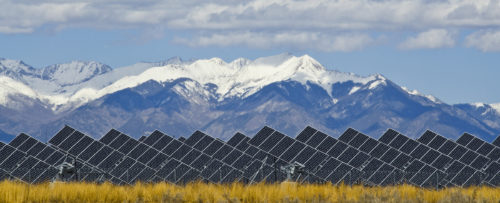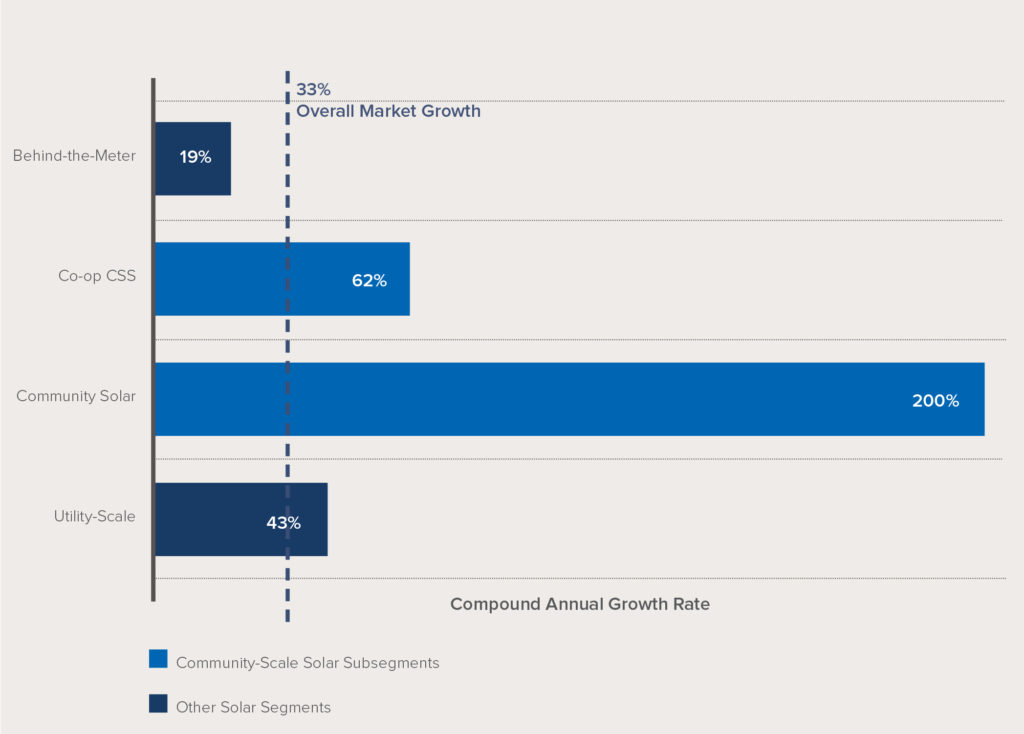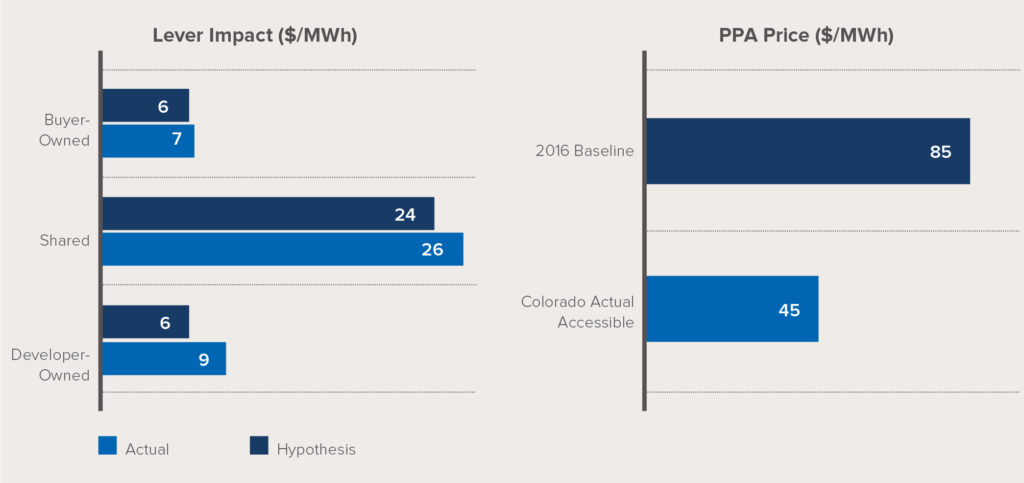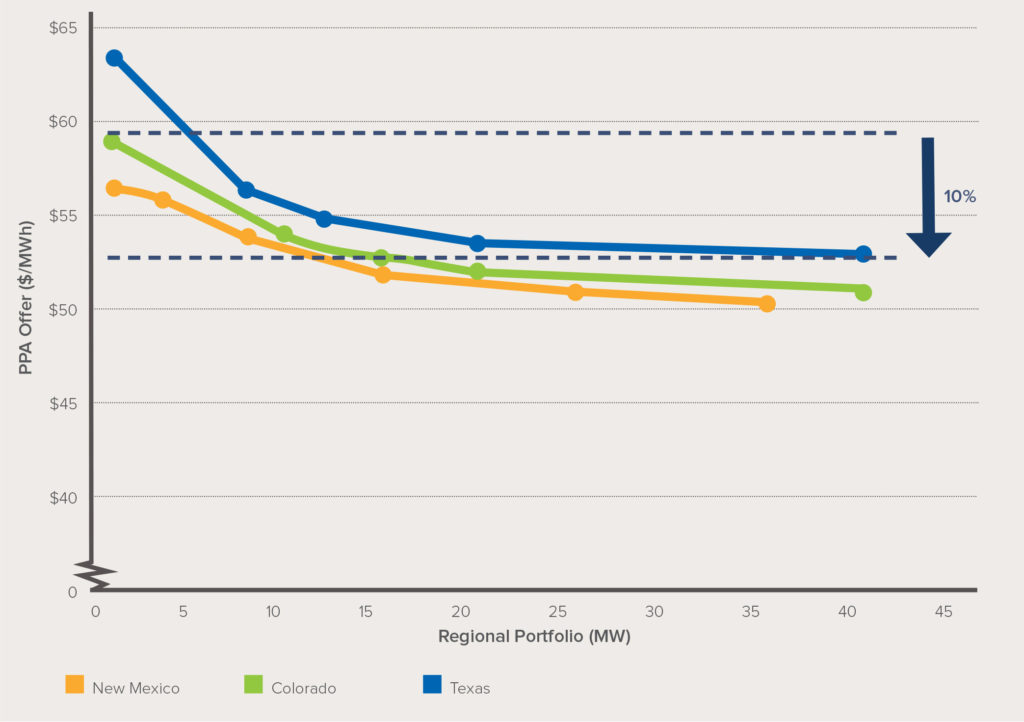A series of large solar panels forms a symmetrical line at a power plant in the San Luis Valley of central Colorado. The installation must be one of the most scenic in the United States, as it backs up to the snow capped Sangre de Cristo Mountains. These panels utilize a tracking system to follow the sun, collecting its energy and using photovoltaic cells to transform the sunlight into electricity.




